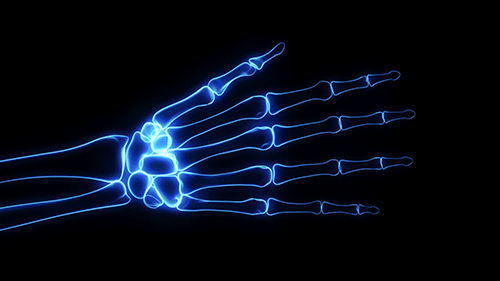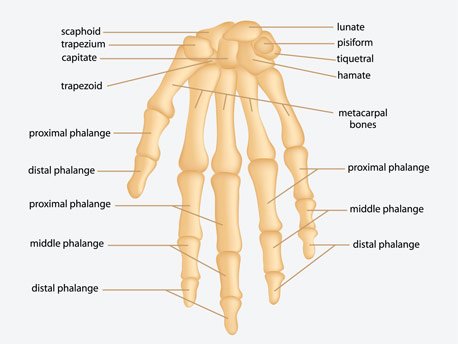The human hand consist of the wrist joint (the carpal bones), the metacarpal bones, and the phalanges. The human hand is made up of 27 bones, which can be divided into three groups: the carpals (wrist bones), the metacarpals (bones in the palm of the hand), and the phalanges (fingers and thumb bones).
- Carpals: The carpals are the 8 small bones that make up the wrist. They are the Scaphoid, Lunate, Triquetral, Pisiform, Trapezium, Trapezoid, Capitate, and Hamate.
- Metacarpals: The metacarpals are the 5 bones that form the palm of the hand. They connect the carpals to the phalanges.
- Phalanges: The fingers and thumb each have 3 bones called phalanges. The thumb has only two phalanges, proximal and distal phalanges. The proximal phalanges are the bones closest to the palm and the distal phalanges are the bones closest to the nail.

Each bone of the hand plays a vital role in the movement and function of the hand. The bones of the hand work together with muscles, tendons, and ligaments to give the hand its range of motion and strength. It’s important to note that certain hand conditions, injuries or diseases can affect the bones of the hand and result in pain, stiffness and loss of function. Consulting with a healthcare professional can help you with the diagnosis and treatment of any hand-related issues.
Are you ready to pitch your content on the Indian Blog? Submit your guest post here.

